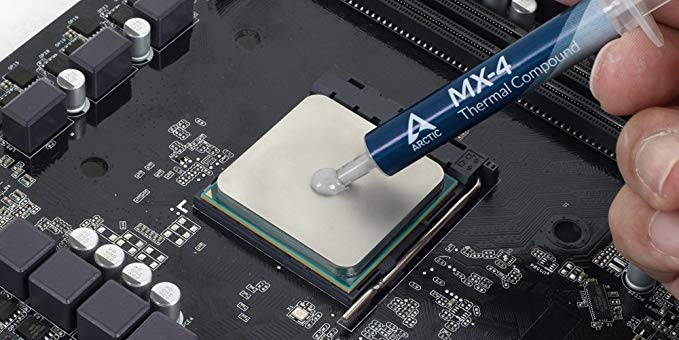Heat management is an important consideration when it comes to computer maintenance because it can damage sensitive components. That’s why proper cooling is essential by applying thermal paste correctly. Thermal paste is specifically designed to fill in the surface gaps and imperfections you’re joining. There are different methods of thermal paste application, ranging from using a dot, line, “X,” spiral, applying too little or too much, and using your fingers when spreading the thermal paste.
In this post, you’ll learn helpful tips when applying thermal paste.
Remove the Old Thermal Paste First
It’s essential to remove the old thermal paste before applying a new one. The procedure is simple from the ends of the heat sink and the processor. You need to prepare a lint-free or microfiber cloth or cotton swab, isopropyl alcohol, and a replacement thermal compound.
Here’s how to get rid of the old thermal paste:
- Remove the first layer of the old thermal paste using the lint-free cloth.
- Wet the microfiber cloth or cotton swab with 70% isopropyl alcohol (the higher the percentage, the better) to remove the thermal paste on the computer chip.
- Wipe the surface of the CPU, GPU or gaming PC lightly with a cotton swab or alcohol dampened with isopropyl alcohol. Also, do the same step on the end of the heat sink.
Use a Good Thermal Paste
Basic thermal greases have zinc oxide and silicone, which are sufficient to fill in most applications. On the other hand, expensive compounds have heat conductors, such as ceramic or silver, facilitating efficient heat transmission. Get thermal paste containing conductive metals, like copper, silver, or gold if you plan to overclock your computer.
Prepare the Surface Further
If necessary, sand the processor and the heat sink surfaces. The two touching surfaces should be perfectly flat to eliminate using thermal paste. If you have a rough heat sink base, wet-sand it using fine grit paper. An emery cloth can also be used to make it smoother. Unless you’re aiming for ultimate cooling performance, this step is not necessary.
Correctly Apply the Thermal Paste to Circular-Based Coolers
When applying thermal paste to circular-based coolers, use a bead of thermal paste smaller than a grain of rice, not pea-sized, because this amount is too much. It will only mess up your motherboard. When the heat is applied, the thermal paste becomes thinner to spread towards the edges. That’s why only a small amount of paste is required.
Here are the steps when applying thermal paste to the circular-based coolers:
- Apply bead-sized thermal paste to the circular-based coolers.
- Using even pressure, install the heat sink with from all sides. You don’t have to spread the thermal paste to the circular coolers because the pressure of application will spread the paste evenly across the surface.
- Never remove the heatsink once you install it because it will break the seal, and you’ll need to start the process again. Also, it will be harder to check if the paste has been applied correctly.
- Reconnect the CPU fan to the motherboard. Make sure that the CPU fan wire is plugged into the CPU fan socket to adjust the fan without changing the voltage automatically.
- Boot the system and check if the fan is spinning. Press F1 or Del to enter the BIOS.
- The temperature of an idle CPU or GPU should be below 40 degrees Celsius.
Correctly Apply the Thermal Paste to Square-Based Coolers
It is more challenging to apply thermal paste to square-based coolers compared to circular-based coolers. Using a dot and pressure won’t result in full coverage.
Here are some ways that you can apply thermal paste to square-based coolers:
- Lines Method:On the base of the square-based coolers, apply two parallel thin lines of thermal paste. The lines should be about one-third of the width in length.
- Cross Method: It is similar to the lines method with an “X” pattern.
- Spread Method: It’s the most effective and popular method. However, it requires more effort. You can use a plastic finger protector and your finger to spread the thermal paste evenly. Make sure that you cover the surface entirely when you do this.
Conclusion
Make sure to keep these tips in mind when using thermal paste. Applying thermal paste to round coolers is easier because the lines are parallel. On the other hand, square-based coolers can be a little bit more challenging to apply thermal paste on. Make sure to use bead-sized thermal paste because too much will mess up your motherboard.
This post was last modified on February 11, 2020 7:17 AM

